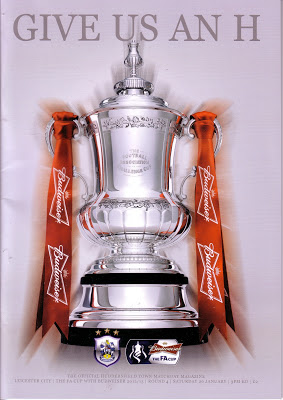Book Review – Regrets of a Football Maverick: The Terry Curran Autobiography by Terry Curran with John Brindley
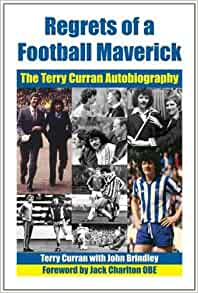 Thanks to the internet, information about players from the past are available after a quick search. For instance Sheffield Wednesday fans of a certain vintage looking for Terry Curran (voted The Owls all-time Cult Hero in a poll run by the BBC), on Wikipedia will find his entry tells us that his professional playing career lasted from 1973 through to 1986, taking in sixteen clubs (including loans) here in England, as well as brief sojourns in Sweden and Greece. Whilst this is useful to an extent in a factual sense, these figures do nothing to provide a detailed picture of the man and his career, and instead raises questions such as why Curran played for so many Clubs, how did he come to play for both Sheffield teams, and what was his relationship with some of the big management names at the time, such as Brian Clough, Jack Charlton, Tommy Docherty and Howard Kendall.
Thanks to the internet, information about players from the past are available after a quick search. For instance Sheffield Wednesday fans of a certain vintage looking for Terry Curran (voted The Owls all-time Cult Hero in a poll run by the BBC), on Wikipedia will find his entry tells us that his professional playing career lasted from 1973 through to 1986, taking in sixteen clubs (including loans) here in England, as well as brief sojourns in Sweden and Greece. Whilst this is useful to an extent in a factual sense, these figures do nothing to provide a detailed picture of the man and his career, and instead raises questions such as why Curran played for so many Clubs, how did he come to play for both Sheffield teams, and what was his relationship with some of the big management names at the time, such as Brian Clough, Jack Charlton, Tommy Docherty and Howard Kendall.
These questions and more are answered in Curran’s 2012 autobiography, Regrets of a Football Maverick. The title itself is telling, with the immediate suggestion to readers that this look back on his career and life has made Curran reflect and so question some of the things he did, given that during his playing career he was a forthright and confident individual, not afraid to say his piece.
One thing to say straight away is that this is a tale from the 1970s and 80s when football and indeed society was very different to that today and as the dustjacket warns (slightly tongue-in-cheek), “Terry Curran’s story may offend the politically correct!”.
In terms of the content of the book, it follows a fairly traditional timeline, with the opening chapter dedicated to Curran’s childhood growing up in Kinsley, a village in West Yorkshire, about eight miles southeast of Wakefield. Immediately within this opening to the book, readers are provided with an insight into an event that was to impact Curran significantly. When he was just eight years old, his parents split with his mother leaving the family home. As Curran writes in the book, “emotionally I was never the same kid…Dad was heart-broken and that had a big influence on me.” This resulted in him stating that, he was “never going to allow any female to get close enough to cause me the same upset. That lack of trust stayed with me for a lot of my adult life” and goes some way to explaining why he was a self-confessed womaniser during his playing career.
The opening chapter also details how Curran came to support Sheffield Wednesday, after being hooked despite The Owls giving up a two-goal lead against Everton in the 1966 FA Cup Final. Readers also get to read about Curran’s youth career playing representative football for the South Kirby Boys District team and for Kinsley Boys which led to offers from league clubs Halifax Town and Doncaster Rovers. Curran opted for Donny given its close proximity to home and his talent was rewarded when manager Maurice Setters offered him a professional contract.
Curran made his debut for Rovers on Saturday 29 September 1973 away at Gillingham, with Doncaster losing 5-1, with a highlight during that season, playing against Liverpool in the FA Cup Third Round replay (the Merseysiders went on to lift the trophy). He was making a name for himself in more ways than one, with the Club mistakenly detailing Curran to the press as ‘Terry’ despite him being christened ‘Edward.’ Clubs were expressing interest in the promising young winger with then First Division clubs, Leeds United, Everton and Sheffield United all apparently keen to sign him. However, it was to be beside the River Trent that Curran opted for and a move to Nottingham Forest and manager Brian Clough in August 1975, then languishing in the Second Division. At the time Curran, saw it as, “a chance to play for one of the game’s greatest managers.”
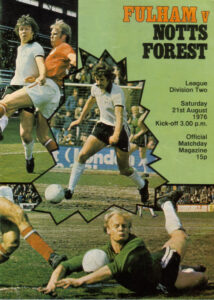
Curran devotes a whole chapter to his time at Forest, with his admiration for Clough and his unique style of management evident. Take Curran’s introduction to the rest of the Reds squad, with Clough telling Martin O’Neill, “I’d like to introduce you to the young man who will be taking your place on Saturday.” Curran’s second season at Forest was the 1976/77 campaign, which opened with a fixture at Craven Cottage to play Fulham. The game ended 2-2 with Curran scoring what he considers to be his best ever goal – “picking the ball up on the halfway line, I beat four defenders before lobbing the ball high into the net high beyond goalkeeper Richard Teale.” George Best (who was a football hero for Curran) was in the crowd that day having signed for the SW6 Club and said, “I was really impressed. He (Curran) is a very good player.” That season was to see Forest gain promotion to the top flight, but Curran was to miss a significant part of it with a cruciate ligament injury suffered in October 1976. Having worked his way back into the side in March, the relationship at Forest began to break down with Curran dropped from the team in the run-in and little playing time at the start of the 1977/78 season as the Club took the First Division by storm to finish the campaign as Champions. By the time the title was being lifted at the City Ground, Curran was at Derby County under the watch of Tommy Docherty.
As Forest went onto be European Champions twice and win numerous other domestic trophies under Clough and Taylor it was a case of what have been for Curran. If he had got his head down and waited and remained injury-free, who is to say he might have got a regular place in the side. As Curran reflects, “If only I could have put an older head on my young shoulders. I turned my back on one of the most successful sides of that generation – any generation.”
Curran’s stay at the Baseball Ground was a brief one with 26 appearances and two goals for The Rams and acknowledged, “I didn’t play as consistently well as I know I could have.” Curran’s main other observation from his time at Deby was that “I don’t think Tommy (Docherty) adjusted to the culture shock of…the real world at Derby after being a constant source of national attention at Old Trafford.” So as the 1978/79 campaign started, Curran swapped the East Midlands for Hampshire at Lawrie McMenemy’s Southampton in what was to prove another one season stay.
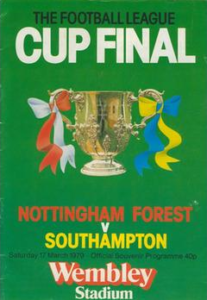
It was both a positive and negative experience. On the one-hand it saw Curran make his one and only appearance in a Final at Wembley, as the Saints lost to Forest 3-2, and strike up a great friendship with 1966 World Cup winner, Alan Ball, but on the other, witnessed a difficult relationship with the Southampton boss. Curran’s criticism was centred on McMenemy’s inability to motivate the dressing room and over-reliance on the senior players within the squad which was detrimental to the younger Saint talent. It was also at Southampton that Curran first encountered cortisone injections to deal with pain in his right leg. Like many other players at the time, they were in common use, and it was only years later that the consequences for ex-players has come to light with the overuse of the treatment.
Curran’s beginning of the end at The Dell comes about in strange circumstances. With Southampton having just beaten Leeds United in the League Cup Semi-Final 2nd Leg, and whilst out celebrating, Curran is ‘approached’ by Jack Charlton who was then manager of Sheffield Wednesday to drop down two divisions to play at Hillsborough. Despite McMenemy’s plans to make some money out of a deal to send Curran to play football in the United States, in March 1979 The Owls signed Curran.
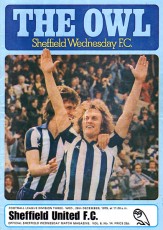
Given that the blue and white of Wednesday had run through Curran’s veins since he was a young boy perhaps it is no shock that his time in S6 was the happiest of his career. During his stint at the Club he helped them to promotion from the Third Division in the 1979/80 campaign, finishing with 24 league goals and claiming the Divisional Golden Boot Award. One game stands out from that season, a performance that went a long way to giving Curran his Cult-hero status at Hillsborough – the ‘Boxing Day Massacre’ as he destroyed Sheffield United 4-0 in front of a third-tier record gate of 49,309. In the following season Wednesday looked good going into the final part of the campaign for a real tilt at promotion to the top flight, but fell away, with Curran critical of Jack Charlton’s lack of spending in the transfer market. Their relationship continued to be fractious with an infamous scrap between them in the Club gym a sign of the different ways the men view how the game should be played. It came to a head when Curran’s three year deal at Wednesday ended, with the management refusing to meet the new contract demands. Out of the blue, Wednesday’s cross-city rivals Sheffield United came in for Curran, who admits that for the first time in his career he moved for the money.
It proved to be a short and pretty unhappy stay at Bramall Lane, with Curran unimpressed by the coaching and training at the Club and both sets of fans in Sheffield less than enamoured with the maverick winger. Salvation came with a loan spell to First Division Everton during the 1982/83 season. This was made permanent in the following campaign, but once again Curran’s luck was out, picking up an injury in September 1983 that kept him out of the game until April 1984. Having worked his way back to fitness and playing in the FA Cup Semi-Final win over Southampton, the Twin Towers beckoned for Curran. However, three weeks before the Final, he suffered a hamstring injury and with it went any chance of an appearance in an FA Cup Final. Everton were becoming a force and in 1984/85 went onto to become First Division winners. Curran played enough games to earn a medal, but once again his emotional nature landed him in serious trouble and an exit from Goodison Park.
With injuries ahead of a European Cup Winners Cup Semi-Final First Leg in Munich, Curran believed his chances of starting the game were good but wanted this confirmed in training. Howard Kendall said he wouldn’t make a decision until shortly before kick-off, so Curran decided that he wasn’t prepared to go to the airport and travel with the squad. He was never selected in the starting line-up or on the bench again. As Curran reflects, “a crazy decision had once again sealed my exit from a great football club, and I was the obvious loser.” Left with no real option, Curran asked for a free transfer and for the 1985/86 season found himself back in Yorkshire at Huddersfield Town.
This move was effectively the beginning of the end of Curran’s career, with injuries taking a toll on his ability to play week-in, week-out. Despite that he managed seven goals in just over thirty appearances for The Terriers. Retirement though beckoned and over the next few years (1986 – 1989) Curran played for seven clubs (Panionios [Greece], Hull City, Sunderland, Grantham Town, Grimsby Town, Chesterfield and Goole Town) but only making a handful of appearances for each. Whilst at Goole he also managed the team, with fate once again proving unkind to Curran, as the financial position of the Club collapsed leading to the eventual demise of Goole Town. He then tried his hand with Mossley in 1992/93, but it proved to another difficult and brief spell in the dug-out with seven defeats in seven games and inevitably the sack.
At that point Curran walked away from football and went into business. Once again like his football career, he seems to have had more than his fair share of back luck, with a lucrative land sale becoming complicated and ending in a protracted legal case. Back in 2012 when the book was written, Curran was living a more settled life with partner Lynne and two sons, Tom and Jock and had done his coaching badges and was working at the Doncaster Rovers Centre Excellence.
For all the tales of on and off-field shenanigans, fall-outs, goals and girls, there is a serious side to this book. And Curran talks with honesty and openness about the mistakes he made in his playing career and in his personal life, and the implications of his series of injuries and his tempestuous and at times impetuous nature. The reality is that it takes courage and strength to admit when we are wrong and even more to put it into print and make it public.
Therefore the final word should go to Curran himself. “I was supposed to be the rebel who played as if tomorrow didn’t exist. The truth was…that I underachieved. I can’t help but wonder what would have happened had I not suffered that terrible injury at Forest and if I’d stayed injury-free when I got my last big chance in the game at Everton. But mostly I got it wrong myself. I picked too many arguments, ruffled too many feathers and took too many wrong turnings.”
(Publisher: Vertical Editions. October 2012. Hardcover: 272 pages)
Buy the book here: Terry Curran – Regrets of a Football Maverick
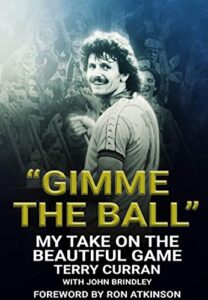 From watching Sheffield Wednesday and England in the golden year of 1966 to football in the age of Covid 19, Owls idol Terry Curran shoots from the hip as he explores the good, bad and ugly sides of the ‘beautiful game’.
From watching Sheffield Wednesday and England in the golden year of 1966 to football in the age of Covid 19, Owls idol Terry Curran shoots from the hip as he explores the good, bad and ugly sides of the ‘beautiful game’. In 1914 one of Britain’s most famous sportsmen went off to play his part in the First World War.
In 1914 one of Britain’s most famous sportsmen went off to play his part in the First World War.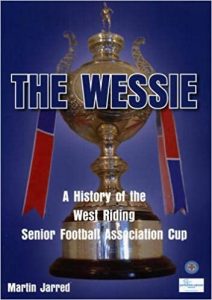 The FA Cup is recognised as the oldest cup competition in the World with it first being played during 1871/72, when Wanderers beat the Royal Engineers 1-0 at the Oval in London. It predated the first Football League Championship in England by seventeen years, when Preston North End took the title.
The FA Cup is recognised as the oldest cup competition in the World with it first being played during 1871/72, when Wanderers beat the Royal Engineers 1-0 at the Oval in London. It predated the first Football League Championship in England by seventeen years, when Preston North End took the title.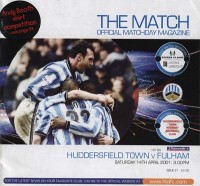

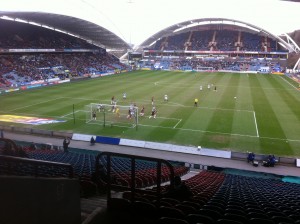
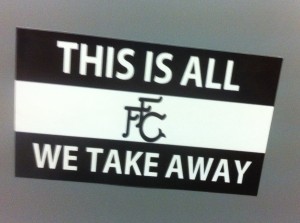
 Will the real Sheffield Wednesday ‘stand-up’? That was the question Owls boss Dave Jones was facing after a 2-1 home defeat in the Yorkshire ‘derby’ against Huddersfield Town.
Will the real Sheffield Wednesday ‘stand-up’? That was the question Owls boss Dave Jones was facing after a 2-1 home defeat in the Yorkshire ‘derby’ against Huddersfield Town.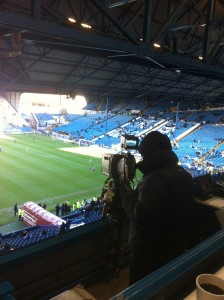 Even with twenty minutes remaining that pretty much sealed the points for Huddersfield, with a goal from a Connor Wickham free-kick three minutes into stoppage time, merely a consolation.
Even with twenty minutes remaining that pretty much sealed the points for Huddersfield, with a goal from a Connor Wickham free-kick three minutes into stoppage time, merely a consolation.